Homeowners Studies
- Spatial Analysis of Frequency and Severity for Water versus Non-water Homeowners Claims in California
- Underwriting Guidelines and Access to Homeowners Insurance
Singh, Gurbhag, 2004. Spatial Analysis of Frequency and Severity for Water versus Non-water Homeowners Claims in California, California Department of Insurance, July.
Download the complete report (pdf format).
ABSTRACT:
The primary focus of this research is the frequency and severity of Water loss claims in California, although analyses of the Non-water and Homeowners claims frequencies and severities is included. The Non-water claims data do not include Water claims. The Homeowners claims consist of Water Claims plus Non-water claims. The spatial distribution patterns of frequencies and severities are mapped and analyzed at the ZIP code level. The study produced thirty six maps that represent the geographic variations of frequencies and severities in different regions of California. The maps reveal the pockets of high frequencies and severities.
The analysis identified regions of very high Water claim frequencies (the Southern California region), very high Non-water frequencies (the Northern and Central California regions), and moderately high Non-water severities (the Northern California, Los Angeles Area, and Southern California regions). Similarly, the study identified regions with very low Non-water severities (the Central California and Bay Area regions). Statistical analysis of the potential factors correlated with the spatial pattern of claims frequency and severity that might help explain these differences was somewhat inconclusive. The factors analyzed at the ZIP code level included average annual precipitation (Precip), housing density per square mile (HD), median age of house (MA), median house value (MHV), and per capita personal income (PI). None of these single factors correlated well with any of the claims categories analyzed. Median house value and per capita income had the highest correlation coefficients with Water severity, (.478) and (.471) respectively. The multiple linear regression models with the above independent variables showed more interesting results. About 27% of the total variance of Water frequencies is explained by the model that uses MHV, HD, HA and Precip as the independent variables. For Water severities, this model explained a little above 23% of the variation. Though the variation explained by these models is not high, the models show statistically significant relationships between the dependent variables and some of the independent variables at 99% confidence level. With Non-water claims, the model explained only eight percent for frequency and nine percent for severity.
McNeill, Don, 2004. Underwriting Guidelines and Access to Homeowners Insurance, California Department of Insurance, August.
Download the complete report (pdf format).
ABSTRACT:
This study attempted to identify the problems that homeowners and home buyers encounter in obtaining homeowners insurance, and the extent of these problems in the California market. This study was limited to California multi-peril (line 4 per NAIC reporting) homeowners insurance companies. Data was obtained from six primary sources: a survey of all homeowner insurance companies regarding their underwriting practices; a manual review of a large sample of insurers' actual underwriting guidelines; a review of the Department's complaint database; zip code summary data on exposure and claims from the top 13 companies; individual claims data from Fair Plan; and a homeowner insurance roundtable meeting attended by prominent experts representing a variety of interests.
Among the important findings:
- The market has tightened, as evidenced by marked increases in written complaints, though complaints are still at a relatively low level.
- Refusal to insure complaints were justified (company not in compliance with the California Insurance Code) 38 percent of the time, cancellation complaints 25 percent of the time and non-renewal complaints 17 percent of the time.
- The large companies do not have a disproportionately high percentage of complaints.
- Two-thirds of the companies changed their underwriting guidelines in the last three years.
- There has been no significant exodus by consumers from the larger companies to smaller companies, FAIR Plan or fire insurance only policies.
- Many homeowners insurance companies, especially the big companies, use CLUE and claims history in their underwriting. Thirty-five percent of the companies count non-chargeable claims and 16 percent count inquiries, such as a question about whether a loss is covered, as claims.
- As of April 29, 2004 three insurance groups continue to use some form of credit scoring for underwriting purposes. The department continues to investigate the basis for all use of credit scoring in underwriting.
- The average cost per claim is up 20 percent over the last two years. Although average water claim costs are up almost 50 percent over the last two years, companies rarely penalize specifically for water or mold claims. This is probably because 41 percent of the companies use water loss exclusions and limits, and 70 percent use mold exclusions and limits.
- Both the average loss and the average earned premium per exposure year have risen about $40 from 2001 to 2003.
- Many insurers (21 percent) use tiers or referrals to other companies in their group.
- In contrast to media reports in late 2002, little evidence was found to support the contention that residential escrows are being routinely delayed because buyers are unable to find homeowner's insurance.





